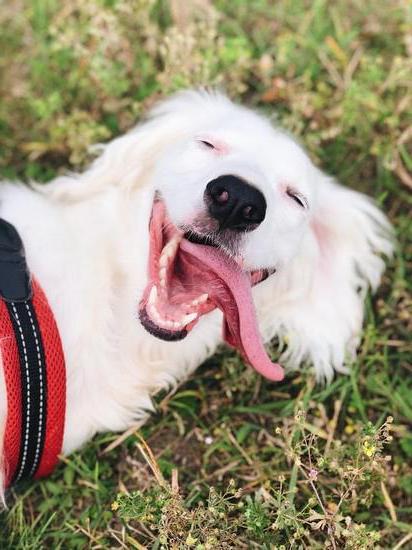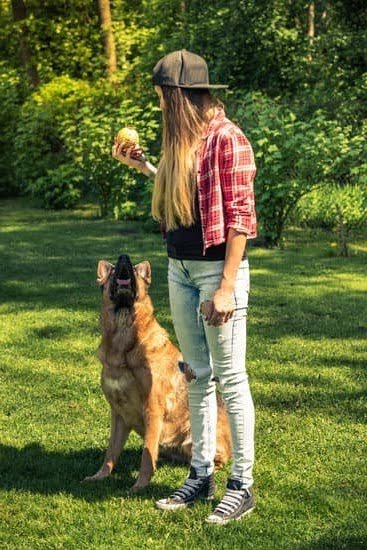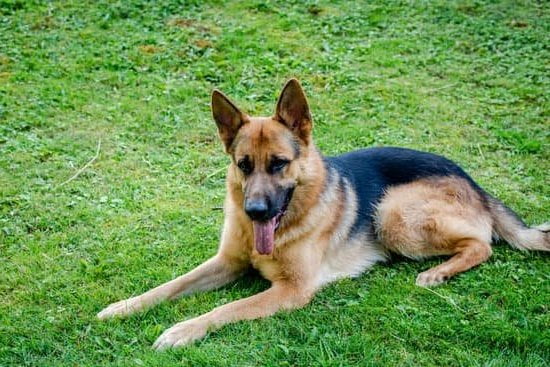Potty training is a crucial aspect of raising a well-behaved and disciplined dog. As a pet owner, knowing how to train your dog to go toilet outside is essential for maintaining cleanliness in your home and promoting good hygiene habits for your furry friend. By implementing proper training techniques and consistency, you can effectively teach your dog where it’s acceptable to relieve themselves.
Training your dog to go toilet outside not only benefits you as the owner but also provides numerous advantages for your canine companion. It helps prevent indoor accidents, reduces the risk of unpleasant odors in your home, and establishes a healthy routine for your pet. Additionally, outdoor potty training promotes mental stimulation by encouraging exploration and physical activity during toilet breaks.
Through this comprehensive guide, we will explore the various aspects of potty training, including the importance of establishing a consistent routine, using positive reinforcement techniques, and addressing common mistakes that can hinder progress. By following these tips and understanding the significance of proper potty training, you can create a harmonious living environment for both you and your beloved four-legged friend.
Benefits of Training Your Dog to Go Toilet Outside
Potty training your dog to go outside has numerous benefits for both you and your furry friend. One of the main advantages is that it helps establish a strong bond between you and your pet. By successfully training your dog to do their business outside, you are fostering a sense of communication and understanding between the two of you. This can lead to a closer relationship built on trust and mutual respect.
Additionally, training your dog to go toilet outside can improve their overall health and well-being. When dogs are regularly taken outside for potty breaks, they have more opportunities for exercise and mental stimulation. This can help prevent behavioral issues that may arise from pent-up energy or boredom. Outdoor potty breaks also expose your dog to different sights, sounds, and smells, which can enrich their sensory experiences and contribute to their overall happiness.
Furthermore, teaching your dog to relieve themselves outside can make your life as a pet owner much more convenient. You won’t have to worry about cleaning up messes inside the house or dealing with unpleasant odors associated with indoor accidents. By establishing a routine of outdoor potty breaks, you can create a predictable schedule that works for both you and your dog, making daily life easier and more enjoyable for everyone involved.
Preparing Your Home for Potty Training
One of the crucial aspects of successfully training your dog to go toilet outside is ensuring that you have the right equipment and supplies in place. Before you begin the potty training process, it’s essential to prepare your home with the necessary items that will aid in this training.
One key item to have is a crate or a designated area where your dog can rest and sleep comfortably. This helps establish boundaries and limits their access to different areas of the house, especially during the initial stages of potty training.
In addition to a crate, you should also invest in high-quality cleaning supplies that are specifically designed for removing pet stains and odors. Accidents are inevitable during the potty training process, so having effective cleaning products on hand will help in maintaining a clean and odor-free environment for both you and your pup. It’s important to clean any accidents thoroughly as residual odors can attract your dog back to the same spot.
Another great tool to have when preparing for potty training is a leash. A leash can be used to safely guide your dog outside when it’s time for bathroom breaks.
By using a leash, you can control where your dog goes potty and prevent them from having accidents indoors. Remember, consistency is key when it comes to toilet training, so having the right equipment and supplies will set you up for success in teaching your dog how to go toilet outside.
| Key Supplies | Importance |
|---|---|
| Crate | Establish boundaries and limit access |
| Cleaning Supplies | Remove pet stains and odors effectively |
| Leash | Safely guide dog outside for bathroom breaks |
Establishing a Consistent Routine for Potty Breaks
When determining a potty schedule for your dog, consider their age, breed, size, and activity level. Puppies typically need more frequent potty breaks due to their smaller bladders and higher metabolism. Larger breeds may also require more frequent trips outside compared to smaller breeds. Additionally, active dogs may need additional opportunities to go toilet outside to prevent accidents indoors. By understanding your dog’s individual needs, you can tailor their potty schedule accordingly.
To establish a consistent routine for potty breaks, use verbal cues such as “potty time” or “go toilet” each time you take your dog outside. This will help them associate the cue with the action of eliminating outdoors. Be patient and give them ample time to do their business. If your dog successfully goes toilet outside, be sure to praise and reward them immediately. Over time, they will learn that going potty outside is rewarding and encouraged behavior.
| Benefits of Establishing Routine | Tips for Establishing Routine |
|---|---|
| Helps dogs understand expectations | Use verbal cues consistently |
| Prevents accidents indoors | Be patient with your dog’s pace |
| Strengthens bond between owner and pet | Reward successful bathroom breaks promptly |
Using Positive Reinforcement Techniques for Successful Training
Understanding the Power of Positive Reinforcement
Positive reinforcement is a highly effective technique when it comes to training dogs, including teaching them to go potty outside. This method involves rewarding your dog with treats, praise, or playtime whenever they exhibit the desired behavior, such as going to the bathroom outside. By associating going potty outside with positive outcomes, your furry friend will be more motivated to repeat this behavior in the future.
Creating a Reward System
To effectively use positive reinforcement for toilet training your dog, it’s essential to establish a consistent reward system. Choose high-value treats that your dog loves and only give them as a reward for successfully going potty outside. Praise and petting can also be great sources of positive reinforcement. Remember to provide the rewards immediately after your dog eliminates outdoors to help them make the connection between the behavior and the reward.
Consistency Is Key
Consistency plays a crucial role in using positive reinforcement for successful toilet training. Make sure that everyone in your household follows the same reward system and uses consistent verbal cues or commands during potty breaks. By being consistent with your approach, your dog will quickly learn what is expected of them when it comes to going potty outside. With patience, persistence, and positive reinforcement, you can effectively train your dog to go toilet outside.
Common Mistakes to Avoid During Potty Training
Potty training your dog to go toilet outside is an essential step in ensuring a harmonious relationship between you and your furry companion. However, during the training process, there are common mistakes that pet owners often make that can hinder the progress of successful training. By being aware of these pitfalls, you can avoid them and set your dog up for success in learning where to do their business.
To ensure that your potty training efforts are effective, here are some common mistakes to avoid:
- Consistency is key: One of the biggest mistakes pet owners make is being inconsistent with the schedule of potty breaks. It’s important to take your dog out at the same times every day, such as first thing in the morning, after meals, and before bedtime. This helps establish a routine and reinforces good potty habits.
- Avoid punishment: Punishing your dog for accidents indoors will only confuse them and may lead to anxiety or fear. Instead of scolding or yelling at your dog when they make a mistake, focus on positive reinforcement techniques such as praise, treats, or playtime when they go potty outside.
- Not supervising effectively: Another common mistake is not supervising your dog closely enough during the training process. Keep an eye on your pet at all times when they are inside to catch any signs that they need to go out. If you cannot supervise them, consider confining them to a crate or designated area.
By avoiding these common mistakes and following a consistent routine with positive reinforcement techniques, you can effectively train your dog to go toilet outside without unnecessary setbacks or challenges. Remember that patience and dedication are essential during the potty training process, and celebrating small successes along the way will help motivate your furry friend to continue learning and improving their bathroom habits.
Dealing With Accidents
Accidents are an inevitable part of the potty training process when teaching your dog to go to the toilet outside. It is important to remain patient and understand that accidents will happen during the learning phase. When accidents do occur, it is crucial to clean up the mess promptly and effectively to prevent any lingering smells from encouraging further indoor elimination.
One key aspect of dealing with accidents is using an enzymatic cleaner specifically designed for pet messes. Regular household cleaners may not fully eliminate the odor, which can lead your dog to continue using the same spot for their business. Enzymatic cleaners break down the proteins in urine and feces, effectively removing both the stain and odor.
In addition to cleaning up accidents properly, it is essential not to reprimand your dog harshly for accidents that occur during training. Punishing your dog for going in the house can create fear or anxiety around potty time, making it harder for them to learn how to train a dog to go toilet outside successfully.
Instead, focus on redirecting their behavior outside and praising them when they do eliminate in the appropriate spot. Positive reinforcement is much more effective than punishment in helping your dog learn where they should go potty.
Gradual Transition From Indoor Potty to Outdoor Potty
Transitioning From Indoor to Outdoor Potty
When it comes to transitioning your dog from using indoor potty pads to going outside, patience and consistency are key. Start by gradually moving the potty pads closer to the door leading outside. This helps your dog associate going potty with being outdoors. Once your dog is comfortable using the pad near the door, start moving it outside gradually.
Introducing Outdoor Potty Area
Create a designated outdoor potty area for your dog. Choose a spot in your yard that is easily accessible and where you want your dog to go potty consistently. Take your dog to this area every time you go out for a potty break. Use command words like “go potty” or “do your business” to help them understand what is expected.
Encouraging Outdoor Elimination
To encourage your dog to eliminate outdoors, be sure to take them out frequently, especially after meals, naps, and playtime. Stay with them in the designated potty area and praise them when they go potty outside. Offering treats or their favorite toy as a reward can also reinforce the behavior of going toilet outside. With time and positive reinforcement, your dog will learn that outdoor is the appropriate place for pottying.
Celebrating Success
Training your dog to go toilet outside is a significant achievement both for you and your furry companion. In this section, we will focus on the importance of celebrating success and rewarding your dog for their progress in potty training. Positive reinforcement plays a vital role in encouraging desirable behaviors in dogs, and celebrating small victories can go a long way in reinforcing good habits.
To effectively reward your dog for using the designated spot outside, consider implementing the following strategies:
- Offer verbal praise: When your dog successfully goes potty outside, use an upbeat tone of voice to show them that they’ve done something right.
- Give treats: Small, bite-sized treats can be a powerful motivator for dogs. Keep a stash of treats handy during potty breaks and reward your pup immediately after they finish their business outside.
- Use toys as rewards: Some dogs may be more motivated by play than food. Consider using a favorite toy as a reward for going toilet outside.
Remember to make the reward immediate and relevant to reinforce the desired behavior effectively. Consistency is key when it comes to rewarding your dog for progress in toilet training. By celebrating each successful trip outdoors, you are not only reinforcing the behavior but also strengthening the bond between you and your pet.
In addition to physical rewards, showering your dog with affection can also serve as positive reinforcement. Patting or cuddling your furry friend after they go toilet outside can further communicate that they have pleased you with their actions. Ultimately, celebrating your dog’s success in potty training will help instill good habits and create a harmonious living environment for both of you.
Troubleshooting
In conclusion, training your dog to go toilet outside is a necessary and beneficial process that requires patience, consistency, and positive reinforcement. By understanding the importance of potty training and the benefits it brings for both you and your furry companion, you can set yourself up for success in this endeavor.
Preparing your home with the right equipment and supplies, establishing a consistent routine for potty breaks, and using positive reinforcement techniques are all essential steps in teaching your dog how to go toilet outside effectively.
When facing challenges during the toilet training process, it’s important to avoid common mistakes such as punishment-based methods or inconsistent routines. Instead, focus on troubleshooting the specific issues at hand by identifying any underlying reasons for accidents or resistance to outdoor pottying. Whether it’s fear of certain outdoor environments or confusion about where to go, addressing these challenges with patience and understanding is key to helping your dog succeed.
As you gradually transition from indoor pottying to outdoor pottying, celebrate every success and progress made by rewarding your dog accordingly. Consistency and positive reinforcement will continue to be crucial in reinforcing good habits and eliminating bad ones.
Remember that accidents are part of the learning process, so handle them calmly by cleaning up effectively and avoiding reprimanding your dog harshly. With time, dedication, and a clear understanding of how to train dogs to go toilet outside properly, you will eventually achieve success in this essential aspect of pet ownership.
Frequently Asked Questions
How Do You Train a Dog to Pee and Poop Outside?
Training a dog to pee and poop outside involves consistency, positive reinforcement, and patience. Take your dog outside frequently, especially after meals or naps, and praise them when they go potty outdoors. Use verbal cues to associate with the act of eliminating.
How Do You Potty Train a Dog That Refuses to Go Outside?
If a dog refuses to go potty outside, it’s essential to understand the reason behind their reluctance. It could be due to fear, anxiety, or discomfort. Try gradually introducing the outdoor environment, use treats as motivation, and establish a routine that makes them feel safe.
How Do I Train My Dog to Go to the Bathroom in My Yard?
To train a dog to go to the bathroom in your yard, create a designated area for them with specific cues for elimination like “Go potty.” Establish a routine of taking them to that spot consistently and reward them with treats or praise when they use it appropriately.

Welcome to the blog! I am a professional dog trainer and have been working with dogs for many years. In this blog, I will be discussing various topics related to dog training, including tips, tricks, and advice. I hope you find this information helpful and informative. Thanks for reading!





